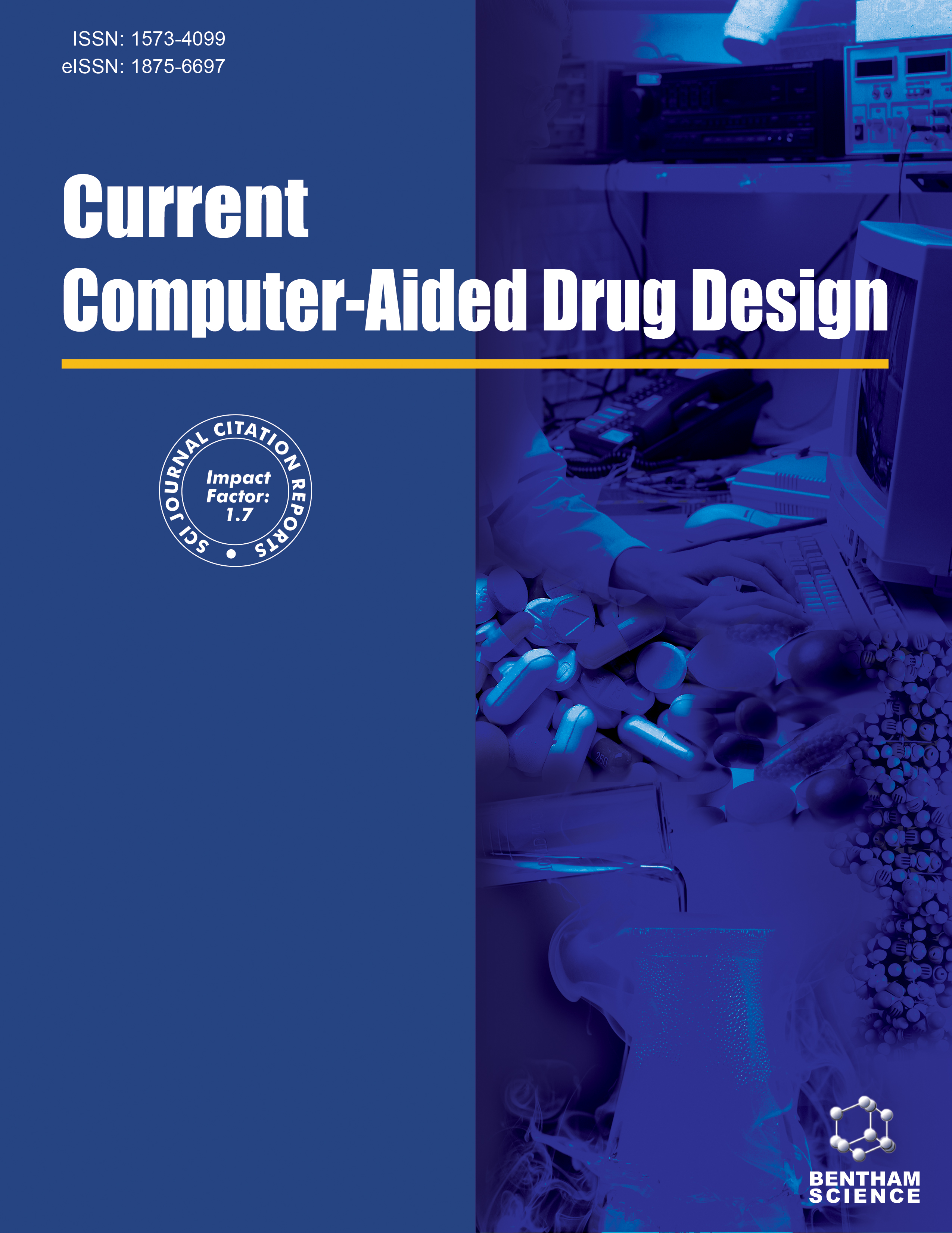- Home
- A-Z Publications
- Current Computer - Aided Drug Design
- Previous Issues
- Volume 18, Issue 5, 2022
Current Computer - Aided Drug Design - Volume 18, Issue 5, 2022
Volume 18, Issue 5, 2022
-
-
Melianone inhibits Secreted Aspartic Proteases (SAP), a Virulence Factor During Hyphal Formation in Candida albicans
More LessAuthors: Amalanathan Veni, T. S. Lokeswari, Dhanapal Pavithra and Thennavan SugapriyaBackground & Objective: Candida albicans (C.-P. Robin) Berkhout, the pathogenic yeasts’ ability to transform from yeast to hyphal forms in the bloodstream is essential during systemic infections. Among the several virulence factors studied, secreted aspartic proteinases (SAPs) involved in hyphal penetration are targets of putative hyphal inhibitors. Upregulation of SAP6 gene, (two-to 31- fold high) during budded to hyphal tr Read More
-
-
-
Some Flavolignans as Potent Sars-Cov-2 Inhibitors via Molecular Docking, Molecular Dynamic Simulations and ADME Analysis
More LessBy Adnan CetinBackground: The COVID-19 pandemic emerged at the end of 2019 in China and spread rapidly all over the world. Scientists strive to find virus-specific antivirals against COVID-19 disease. This study aimed to assess some flavolignans as potential SARS-CoV-2 main protease (SARS-CoV-2 Mpro) inhibitors using molecular docking study, molecular dynamic simulations, and ADME analysis. Methods: The detailed interactions b Read More
-
-
-
Methodological Verification-based Screening of the Representative Ingredients for Traditional Chinese Medicine: Taking Astragalus as an Example for Interfering with Cervical Cancer
More LessAuthors: Hao Sun, Dan Wang, Mengjin Xu, Yi Gao and Fan LiBackground: The screening of effective ingredients is the bridge between the research of efficacy and the mechanism of traditional Chinese medicine. Although promising virtual screening has emerged as an attractive alternative, an ideal strategy is still urgently required due to the characteristics of multi-ingredients and multi-targets of traditional Chinese medicine. Objective: The aim of the study was to develop a Read More
-
-
-
Computational Investigations of Coumarin Derivatives as Cyclindependent Kinase 9 Inhibitors Using 3D-QSAR, Molecular Docking and Molecular Dynamics Simulation
More LessAuthors: Sisi Liu, Yaxin Li, Xilin Wei, Ran Zhang, Yifan Zhang and Chunyan GuoBackground: Cyclin-dependent Kinase 9 as one of the serine/threonine protein kinases has become an important target for the treatment of cancer especially driven by transcriptional dysregulation. Objective: This thesis was conducted to elucidate the structure-activity relationship and interaction mode of coumarin compounds acting on CDK9. Methods: Three-dimensional quantitative structure-activity relationship (3D- Read More
-
-
-
In vitro Inhibition Profiles and Molecular Docking Analysis of Benzohydrazide Derivatives on Red Blood Cell Carbonic Anhydrases Isozymes
More LessAuthors: Işıl N. Korkmaz, Pınar Güller, Ramazan Kalın, Aykut Öztekin and Hasan ÖzdemirBackground: Carbonic anhydrases (CAs, EC 4.2.1.1) are metalloenzymes that contain zinc ions on the active side and convert carbon dioxide to bicarbonate in metabolism. Human CA-I and CA-II, which are the most abundant CA isozymes in erythrocytes, have been therapeutic targets in the treatment of glaucoma, hypertension, ulcer, osteoporosis, and, neurological disorders. Benzohydrazides are biologically active compoun Read More
-
-
-
Identification of Potential Drug Therapy for Dermatofibrosarcoma Protuberans with Bioinformatics and Deep Learning Technology
More LessAuthors: Muge Liu, Fan Yang and Yingbin XuBackground: Dermatofibrosarcoma protuberans (DFSP) is a rare mesenchymal tumor that is primarily treated with surgery. Targeted therapy is a promising approach to help reduce the high rate of recurrence. This study aims to identify the potential target genes and explore the candidate drugs acting on them effectively with computational methods. Methods: Identification of genes associated with DFSP was conducted usin Read More
-
Volumes & issues
-
Volume 21 (2025)
-
Volume 20 (2024)
-
Volume 19 (2023)
-
Volume 18 (2022)
-
Volume 17 (2021)
-
Volume 16 (2020)
-
Volume 15 (2019)
-
Volume 14 (2018)
-
Volume 13 (2017)
-
Volume 12 (2016)
-
Volume 11 (2015)
-
Volume 10 (2014)
-
Volume 9 (2013)
-
Volume 8 (2012)
-
Volume 7 (2011)
-
Volume 6 (2010)
-
Volume 5 (2009)
-
Volume 4 (2008)
-
Volume 3 (2007)
-
Volume 2 (2006)
-
Volume 1 (2005)
Most Read This Month
Article
content/journals/cad
Journal
10
5
false
en


